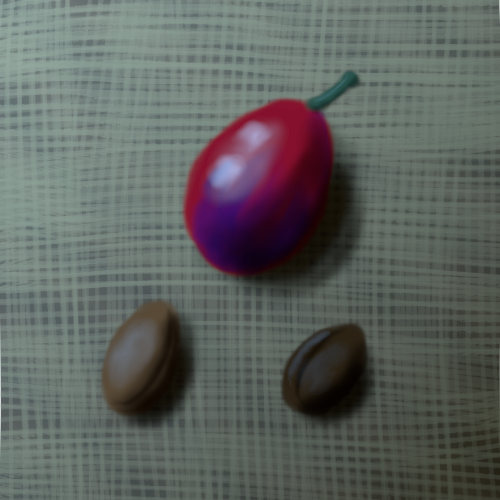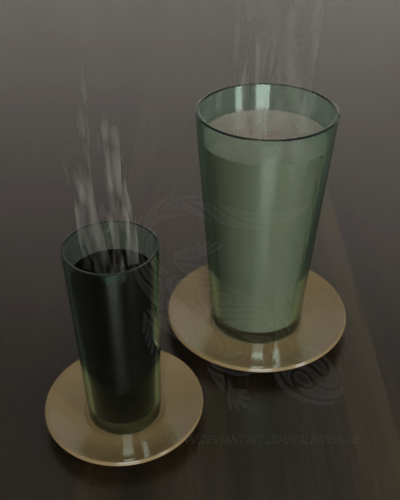Bygara Pits
The seeds of the bygara plant and main ingredient of the popular beverage known as bygeó.
Properties
Material Characteristics
The pits are about the size of an adult Ichtýd's fingernail. The slightly rubbery interior of the seed is surrounded by a hard, wood-like outer shell. In their raw state, this shell is quite sturdy and has a smooth, slightly matte surface. Upon roasting it becomes more brittle and the pits can be crushed in a grinder.
Physical & Chemical Properties
Both the outer shell and the seed itself give off a very bitter taste. The inner part is also rich in a substance with invigorating effects.
Geology & Geography
The bygara plant originally grew in the Sundémina Mountains in the southeast of Gysuphun. Today it is cultivated in various regions of that continent which provide a similar climate.
Life & Expiration
Humidity, for example from dew or the air at sea, will make the seeds start germinating after a few days. Once the shell was cracked by the seedling, it can no longer protect the interior from mold or rot. Untreated pits therefore tend to spoil within a week.
History & Usage
History
Roasted bygara pits are the main ingredient of bygeó. Originally, they were expensive and the beverage was therefore only consumed by nobility or military personnel.
This slowly changed during the last two centuries as technological progress made it easier to cultivate bygara plants, process the pits on a large scale and transport them faster.
Nowadays there is a wide range of breeds and processing grades to accomodate different levels of wealth. The majority of middle and upper class Nimýrité can afford drinking bygeó on a daily basis.
Discovery
A Revitalizing Concoction
The use of bygara pits as a beverage ingredient dates back to the year 1031 PN. A group of missionaries had been deployed to an isolated community in the Sundémina mountains where they learned that farmers chewed on the bitter seeds to work more productively. While the strong taste of the raw seeds was abhorrent for the missionaries and made them feel seriously ill, one of them had the idea of preparing an infusion instead. This diluted form, also sweetened with honey, turned out to be very popular with both the missionaries and the locals.Roasting for Preservation
The first attempt at bringing samples back home failed because the pits germinated and grew mold in the foggy climate of the mountainside forests. About two years later, a group of botanists visited this region to retrieve young plants for cultivation. The process of roasting the pits for preservation was discovered by accident when one distracted botanist forgot to add the water while trying to prepar the infusion. He found himself thinking about how the heat would surely kill the seedling, and realized that this would leave the shells intact to preserve the interior better.Everyday use
The beverage is prepared by grinding the pits into a powder and pouring boiling water over it.
Bygeó is often consumed in the morning or during long working nights to help people wake up or stay attentive.
Refinement
After the pulp of the raw fruit is removed, the pits are cleaned and left to dry. They are then roasted slowly and carefully to let the water evaporate without burning them.
Type
Organic
Odor
fruity
Taste
bitter
Color
dark brown
The enemy had been unrelenting for weeks. By this time, the general was solely running on bygeó.





Comments
Author's Notes
Huh - I set out to write about a port city that "exports bygeó", and then realized that its transportable form deserves its own article. Luckily, this Summer Camp also has a promp which fits perfectly for this one. So, have my answer to the natural material prompt!